Pearls in Maratha Jewellery: History, Craft and Elegance
- EIH User
- August 1, 2024
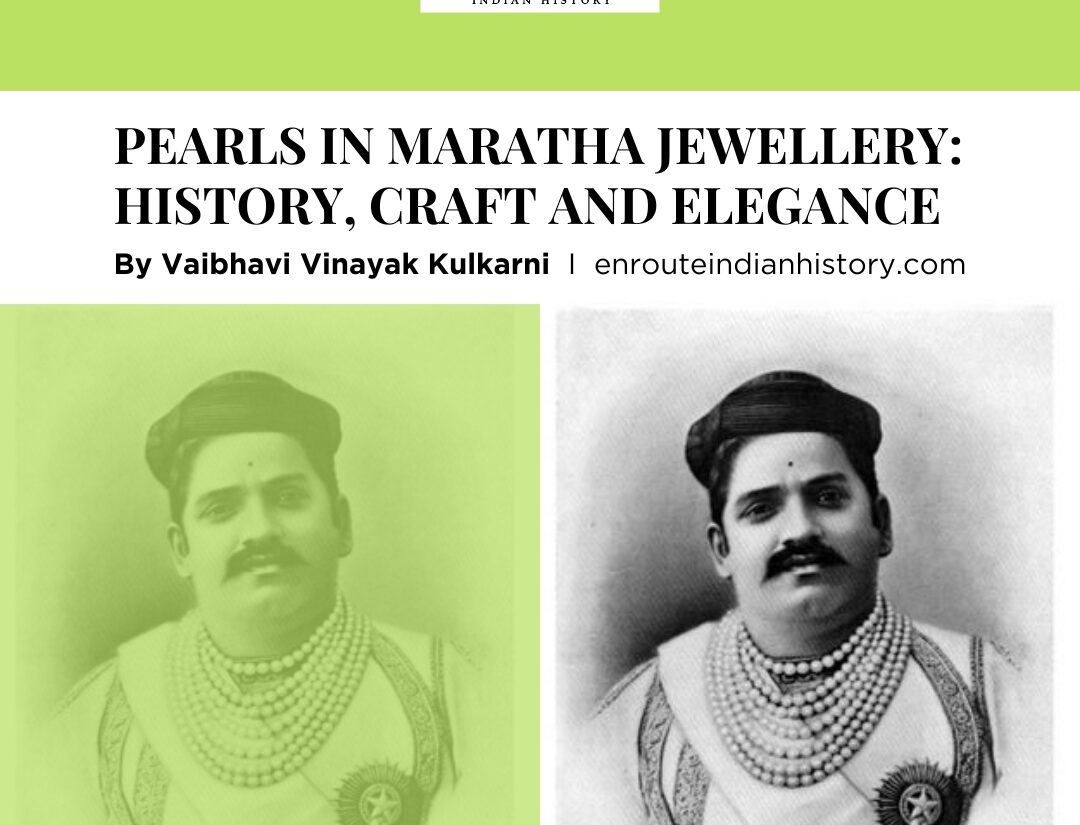
Pearls have been treasured since ancient times, admired for their serene beauty and understated elegance. The Greeks believed pearls were the tears of gods, a divine gift from the heavens. Pearls are associated with the moon in the Hindu culture and it symbolizes wisdom and purity. Chinese tradition revered pearls as protective talismans, placing them in the mouths of the deceased to ease their journey to the afterlife. These stories and beliefs highlight the universal allure of pearls, transcending cultures and time period. Basra pearls holds a place of particular reverence in the world of jewelry.
What makes pearls so captivating?
Their allure lies in their unique formation and their subtle, yet profound beauty. The physical properties of pearls further enhance their charm. They possess a gentle luster that exudes a quiet elegance, drawing attention without being overly flashy. This makes pearls incredibly versatile, seamlessly complementing a variety of styles and occasions. From classic strand necklaces to modern earrings and bracelets, pearls can transition effortlessly from formal events to casual gatherings.
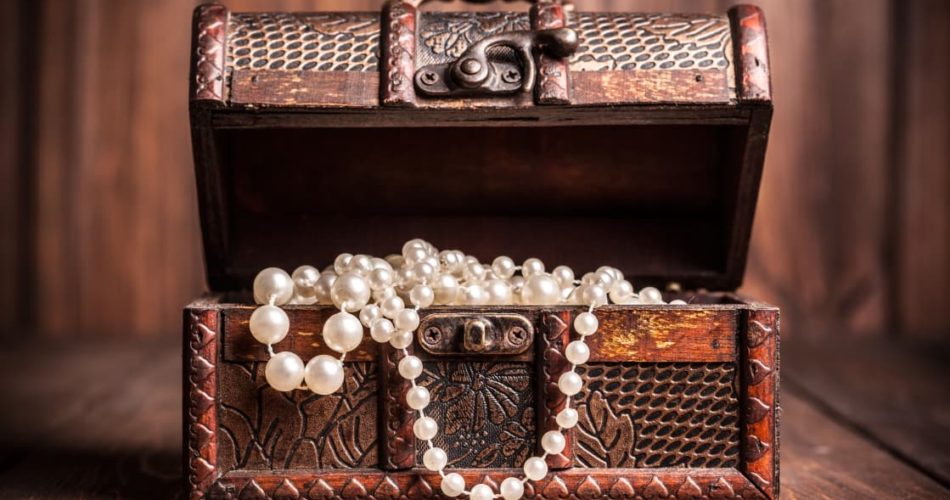
Pearls (Source: Google Photos)
The Enigmatic Allure of Pearls
Pearls, often hailed as the “Queen of Gems,” are distinct in the world of gemstones because of their organic origins. The other precious stones such as diamonds, emeralds and rubies that are mined from the earth, whereas, natural pearls are created within the soft tissue of a living mollusk, such as an oyster or a mussel. This process occurs when an irritant, such as a grain of sand, becomes trapped inside the mollusk’s shell. The mollusk secretes layers of nacre around the irritant, gradually forming a pearl. The rarity and natural beauty of these gems have made them highly valued throughout history.
Among the various types of pearls, several varieties stand out for their exceptional qualities and historical significance. Akoya pearls from Japan are celebrated for their perfectly round shape and brilliant luster. South Sea pearls, known for their large size and satiny appearance, are highly sought after. Tahitian pearls, with their exotic dark hues, offer a unique and mesmerizing appeal. However, one type of pearl that holds a place of particular reverence in the world of jewelry is the Basra pearl.
Basra Pearls: A Legacy of Luxury and Elegance
Basra pearls, originating from the Persian Gulf, are renowned for their extraordinary quality and unmatched luster. These pearls are named after the port city of Basra in Iraq, which was a major trading hub for pearls in ancient times. Basra pearls are esteemed for their white to creamy color, exceptional sheen, and rarity. They have been cherished by royalty and affluent individuals across cultures for centuries.
In Indian jewelry, Basra pearls have a long and illustrious history. The ancient trade routes that connected the Persian Gulf to the Indian subcontinent introduced the Basra pearls to India and the people. Indian royalty, particularly during the Mughal era, prized these pearls for their purity and elegance, incorporating them into elaborate necklaces, earrings, and other adornments.
The Royal Connection: Pearls and Indian Royalties
Historically, pearls have been associated with royalty and nobility. They have adorned kings, queens, and dignitaries, symbolizing their elevated status and refined taste. The ancient Romans, for instance, considered pearls the ultimate symbol of wealth and power, often showcasing them in grand displays of opulence. Cleopatra is famously said to have dissolved a pearl in vinegar and drank it to demonstrate her immense wealth.
In India, Pearls have always been associated with royalty, symbolizing sophistication, class, and refined taste. The Nizam’s of Hyderabad were famous for their extensive collection of Basra pearls. One of the most celebrated pieces is the “Nizam’s Jeweled Pearl Necklace,” a stunning piece adorned with rows of Basra pearls, diamonds, and emeralds. This necklace highlighted the grandeur of the Nizam’s and also reflected the historical significance of Basra pearls.
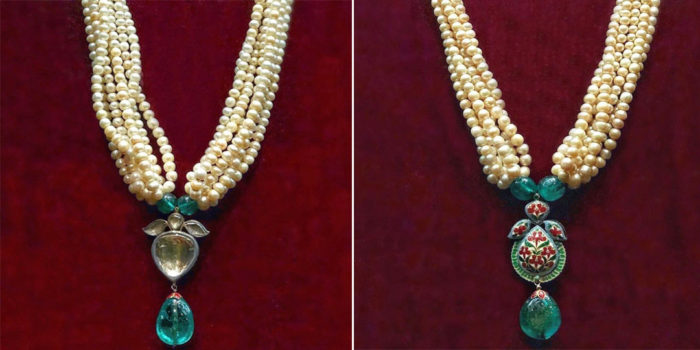
Jugni made in 7 strands of Natural Basra Pearls from the collection of Nizam of Hyderabad (Source: Deccan Chronicles)
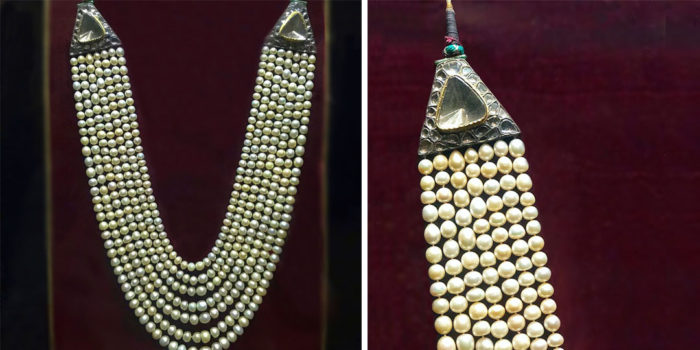
Nizami Royal Satlada (Source: Deccan Chronicles)
Similarly, the Maharaja of Baroda’s pearl carpet is a unique and luxurious example. Commissioned by Maharaja Khande Rao Gaekwad in the 19th century, this stunning piece was woven with over a million pearls and precious stones, intended as a gift for the tomb of the Prophet Muhammad in Medina. Though it never reached its intended destination, the Pearl Carpet of Baroda stands as a testament to the incredible wealth and artistic patronage of Indian royalty.
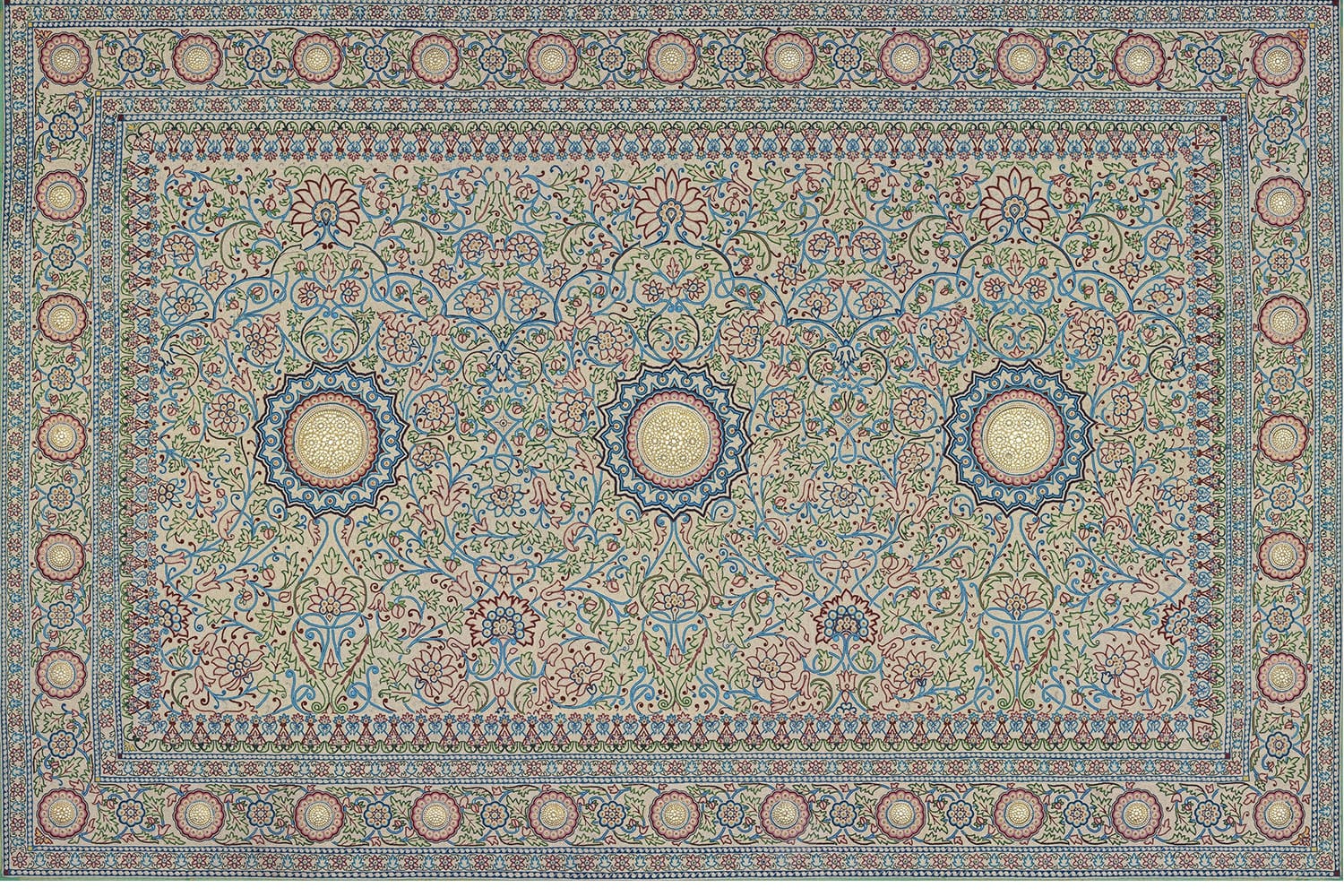
Baroda Pearl Carpet (Source: Map Academy)
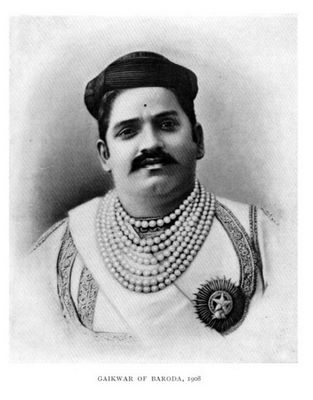
Maharaj Gaikwad wearing Satlada (Source: Deccan Chronicles)
In India, Pearls, often paired with chiffon sarees, became a quintessential fashion statement for royalty. One of the most iconic figures representing this trend was Maharani Gayatri Devi. Renowned for her impeccable style, she often paired exquisite pearl necklaces with elegant chiffon sarees, epitomizing grace and sophistication. Her timeless look became a hallmark of royal fashion, seamlessly merging Western and Indian influences.
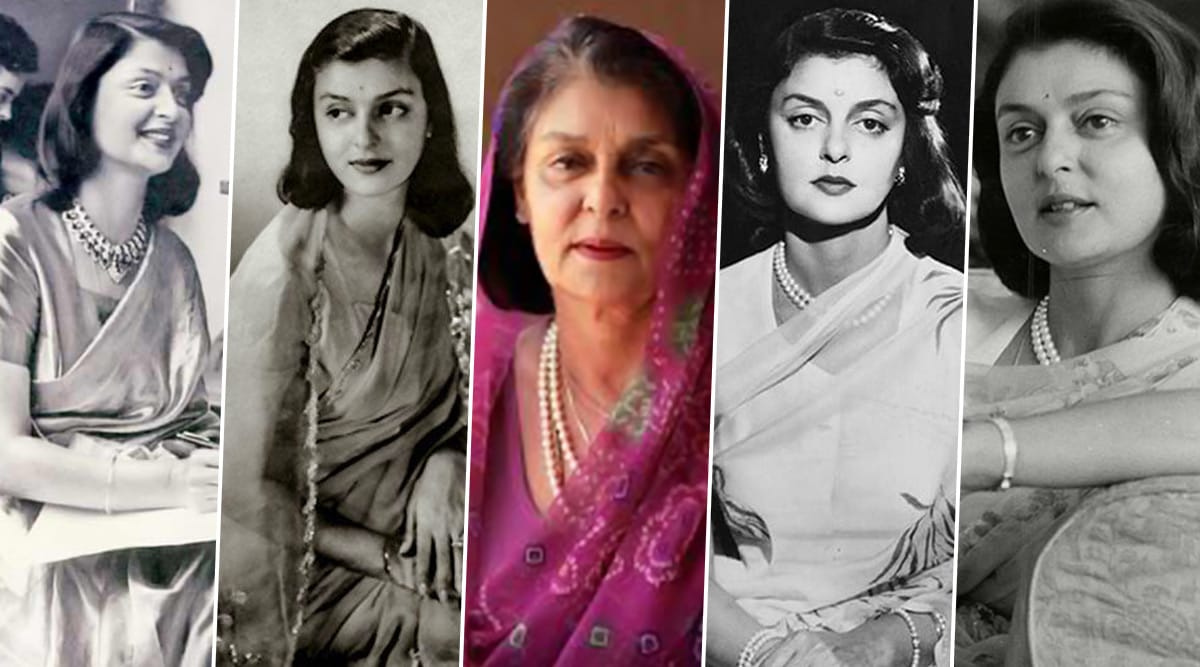
Maharani Gayatri Devi (Source: Google Photos)
Beyond these grand examples, pearls were a staple in the daily adornments of Indian royals.
The Maratha Connection: Basra Pearls in Maratha Jewelry
The use of Basra pearls in Maratha jewelry is a testament to their enduring appeal and the Marathas’ appreciation for fine craftsmanship. The Peshwas, who were the prime ministers of the Maratha Empire in the 18th and early 19th centuries, played a significant role in popularizing Basra pearls. Their affinity for luxury and exquisite jewelry saw the integration of these pearls into traditional Maratha ornaments.
The Nath, traditional nose ring worn by Maharashtrian women is one of the most noteworthy pieces of Maratha jewelry adorned with Basra pearls. The Brahmani Nath is particularly famous, featuring Basra pearls intricately woven with emeralds and rubies. This piece not only exemplifies the beauty of Basra pearls but also reflects the unique cultural heritage of the Maratha people.
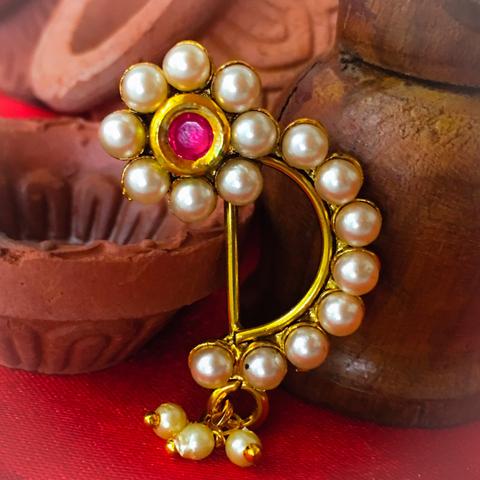
Nath (Source: Sonchafa)
Another exquisite example is the tanmani, a necklace that combines pearls with other precious gemstones. Tanmani necklaces from the Peshwa period often showcased Basra pearls. The pearls’ delicate luster complemented the vibrant colors of the gemstones, creating a harmonious and visually stunning piece.
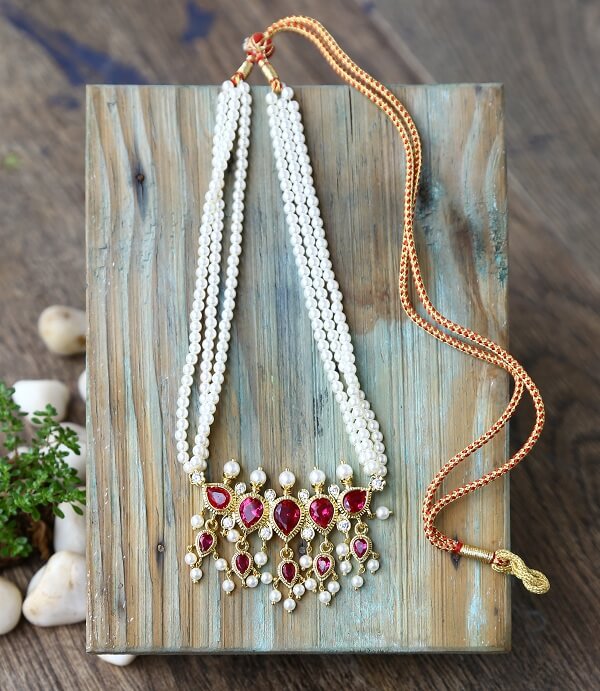
Tanmani (Source: Sonchafa)
The chinchpeti is another traditional piece that prominently features Basra pearls. This choker-style necklace, often worn during special occasions and festivals, is designed with layers of pearls and a central pendant. The Peshwas favored the chinchpeti for its intricate design and the elegance it brought to their attire. The use of Basra pearls in the chinchpeti added a touch of opulence, making it a cherished ornament among Maratha women.
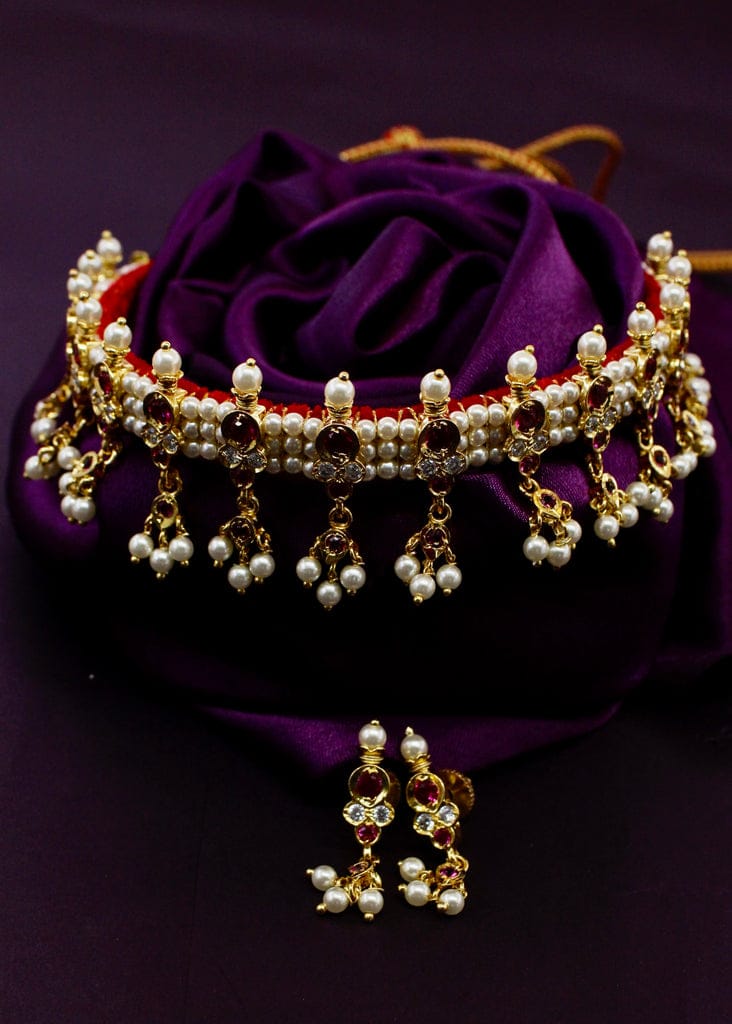
Chinchpeti (Source: Sonchafa)
The kudi, an ear ornament worn on the earlobe, also incorporates Basra pearls. This golden disc, adorned with pearls, is a common piece among Maharashtrian women. The Peshwas’ preference for Basra pearls ensured that these pearls were meticulously embedded in the kudi, enhancing its aesthetic appeal.
Another significant piece is the bhikbali, an ear ornament that was popularized by the Peshwa rulers. The bhikbali features a crescent-shaped design, often decorated with pearls and gemstones. Basra pearls were frequently used in bhikbali to accentuate its beauty. This ornament, worn on the upper part of the ear, showcases the meticulous craftsmanship and the importance of pearls in Maratha jewelry.
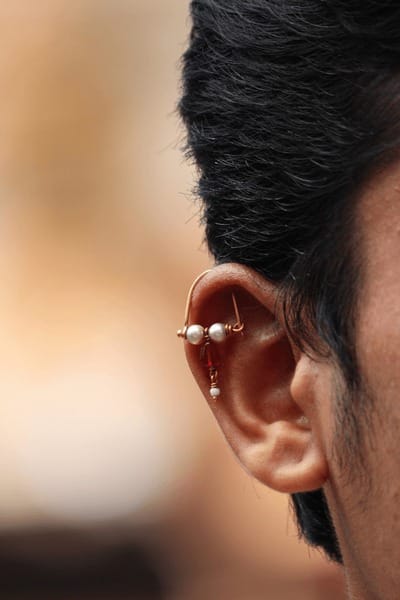
Bhikbali (Source: Sonchafa)
These jewelry pieces, featuring Basra pearls, were prominent during the Peshwa period, adorning the Peshwa rulers, their families, and the sardars of the Maratha Empire. The Peshwas often used these pearls and other jewels as gifts for their loyal sardars. In contemporary times, these traditional pieces are still crafted, albeit with changes in craftsmanship and design, and the quality of pearls used varies, resulting in a range of prices from affordable to high-end, continuing the legacy of unique Maharashtrian jewelry.
The captivating allure of pearls, with their lustrous sheen and historical significance, highlights their esteemed position in the realm of gemstones. From their origins to their revered status among Indian royalty and Maratha nobility, pearls especially Basra pearls have left an indelible mark on the world of luxury and adornment. Their presence in exquisite pieces of jewelry, such as the iconic nath and the opulent tanmani, reflects not only their intrinsic beauty but also the cultural and historical value they hold. As symbols of wealth, sophistication, and artistic craftsmanship, Basra pearls continue to be celebrated and treasured, bridging past and present through their timeless elegance. The legacy of these pearls, interwoven with the stories of Indian and Maratha royalty, serves as a testament to their unparalleled charm and enduring significance in the world of fine jewelry.
Bibliography:
- Stronge, Susan. “Indian Jewellery and the West: Stylistic Exchanges 1750–1930.” South Asian Studies 6.1 (1990): 143-155.
- Viktorovna, Smirnova Ekaterina. “Some notes on traditional Maratha jewellery.” Этнография 4 (6) (2019): 170-178.
- https://indianbijou.wordpress.com/2015/06/20/maharashtra-bridal-jewellery/comment-page-1/
- https://medium.com/fashion-and-jewellery/pearl-jewellery-the-ultimate-symbol-of-elegance-and-grace-5955c5096855
- https://www.vogue.in/fashion/content/basra-pearls-the-history-significance-and-what-makes-it-unique
https://www.trymintly.com/blog/the-regal-splendor-of-peshwai-jewellery

















